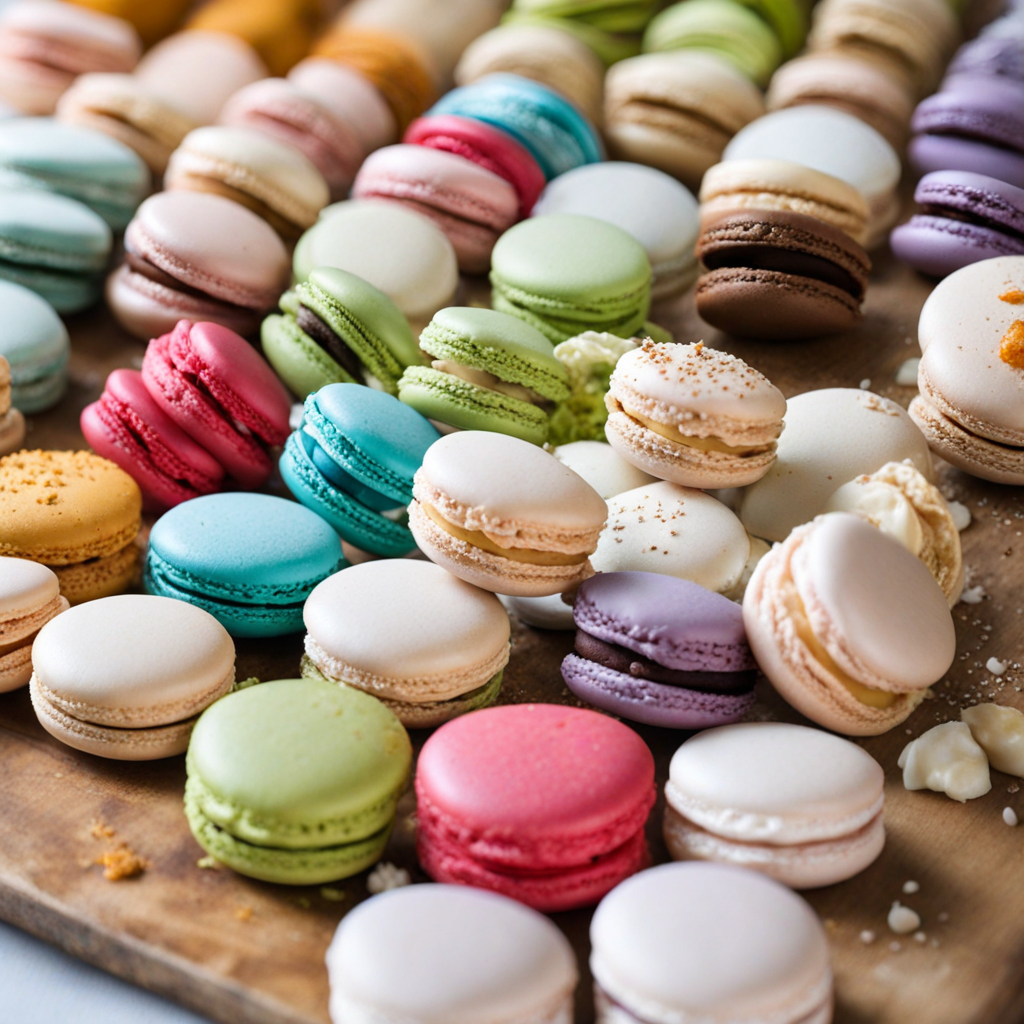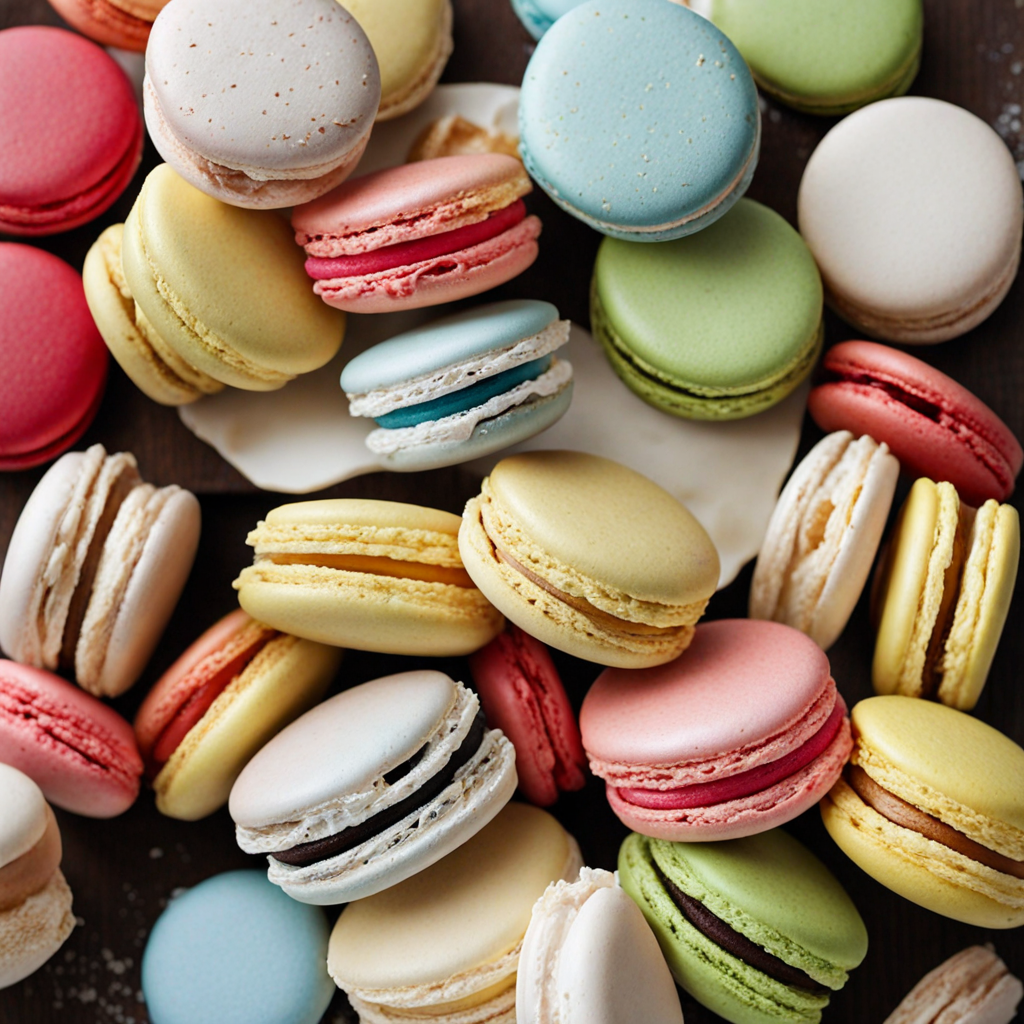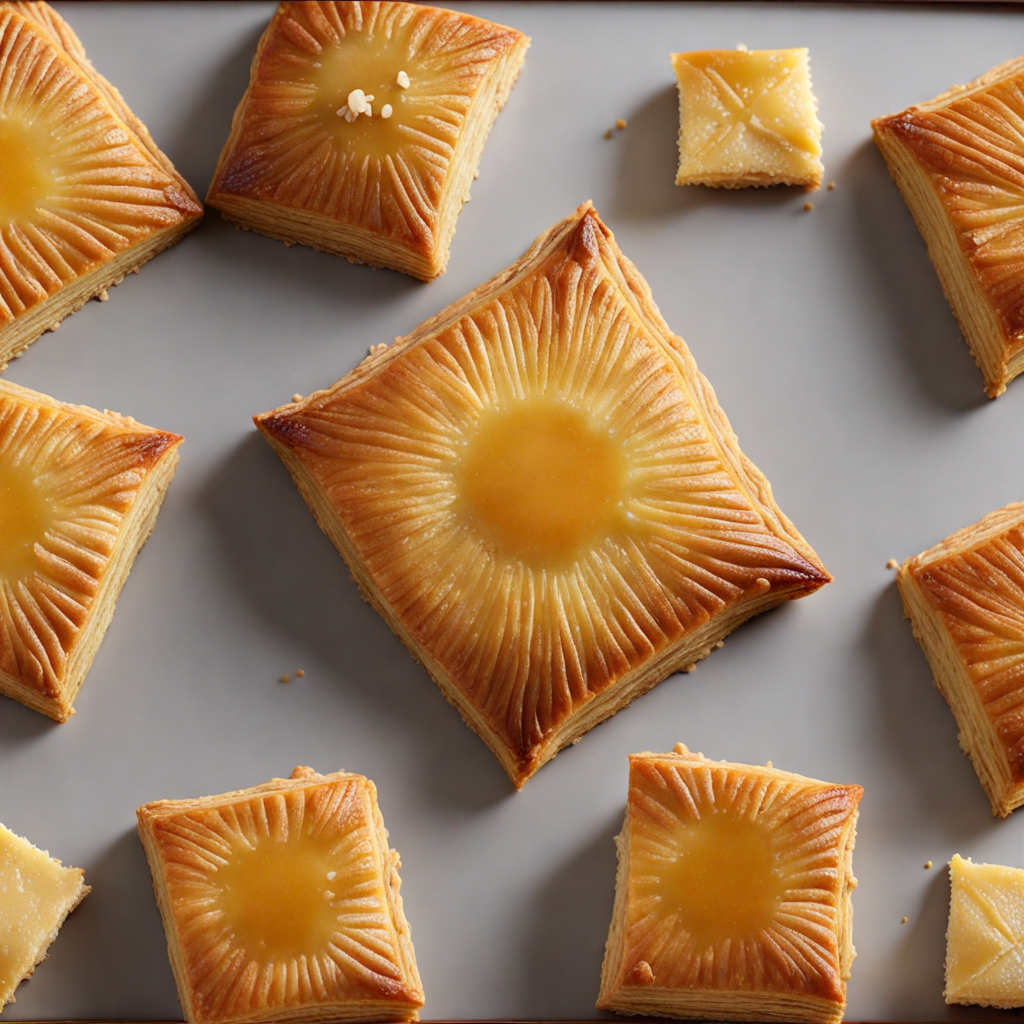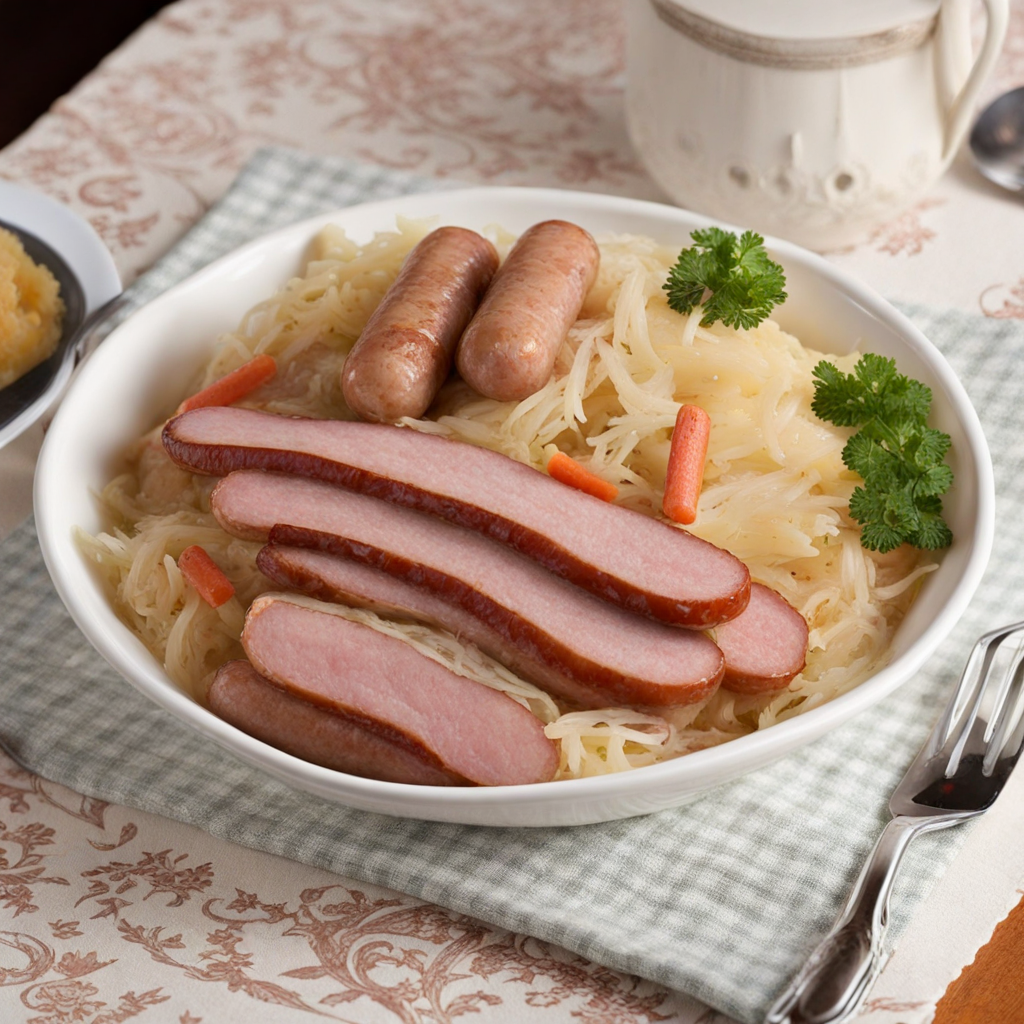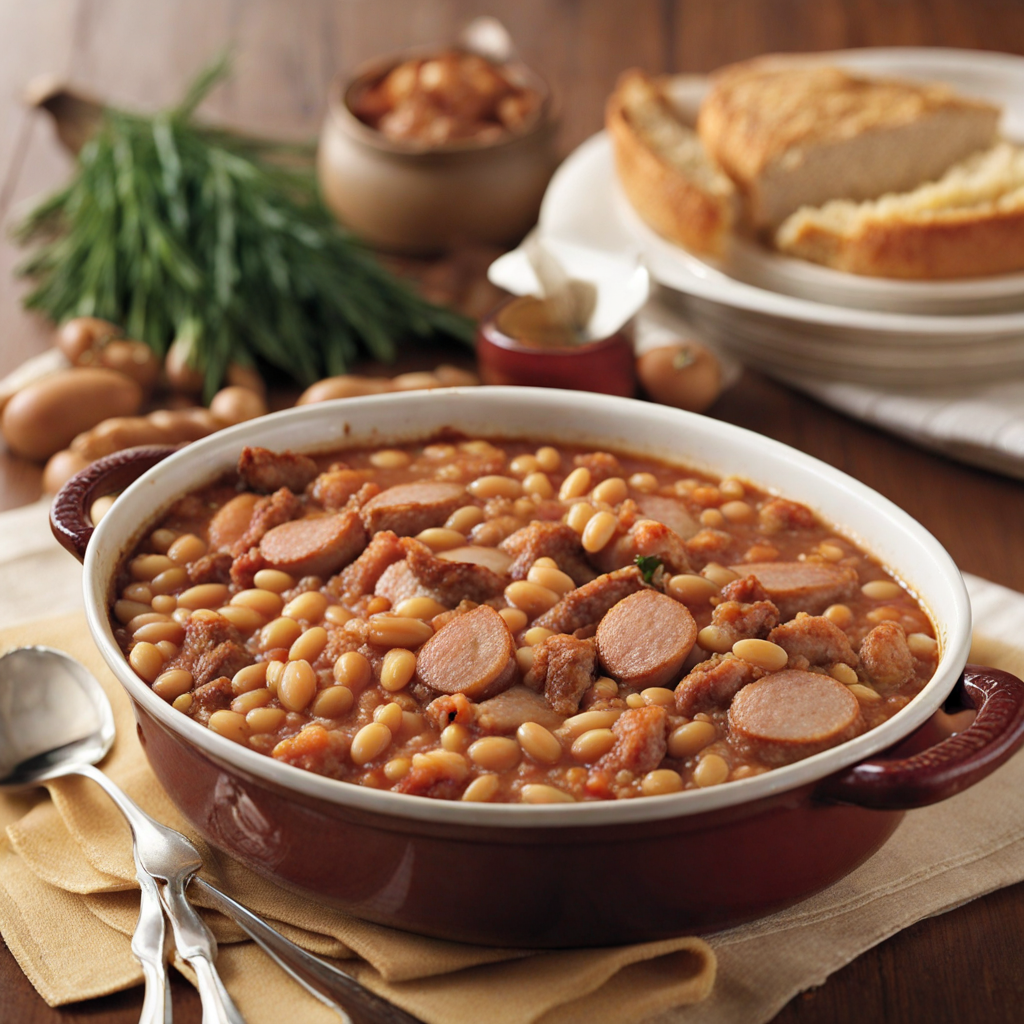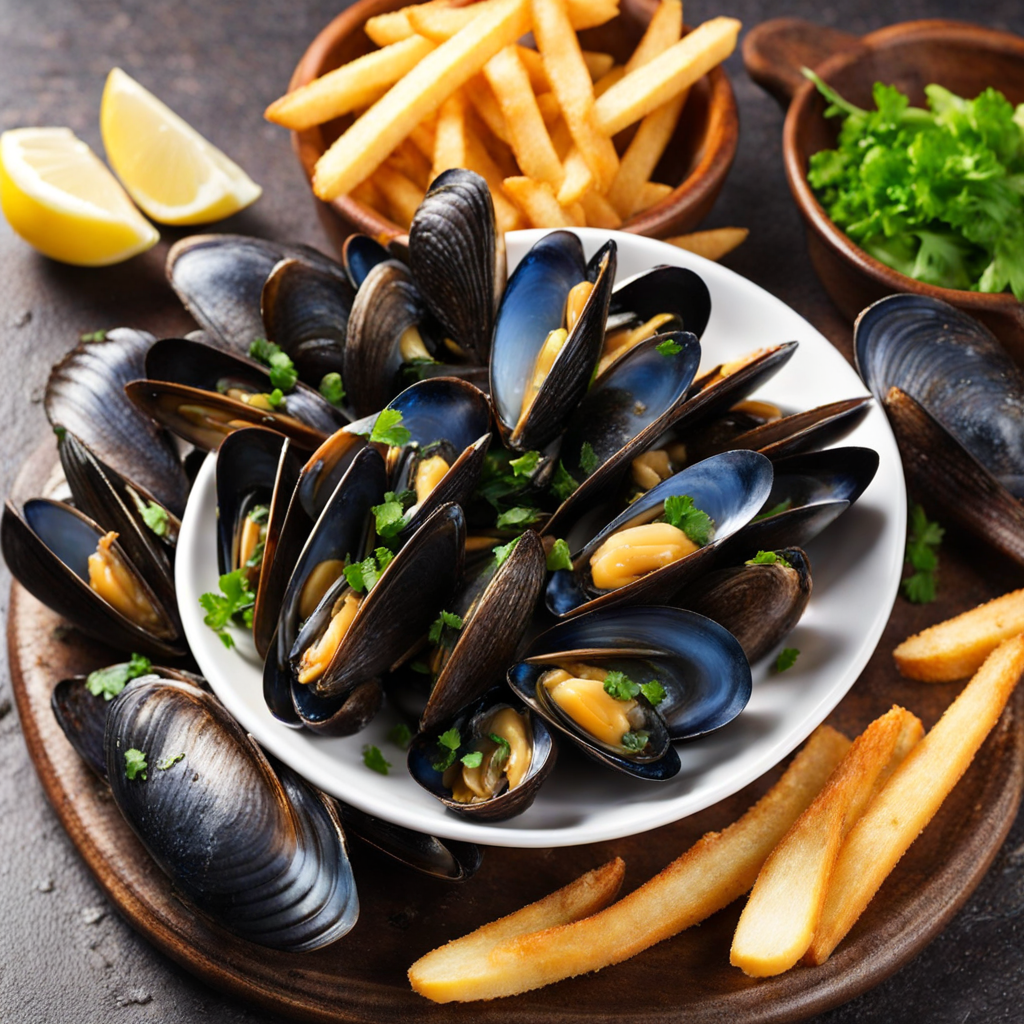Macarons
Macarons are exquisite French confections that are both visually stunning and delightfully flavorful. These delicate meringue-based cookies are made from a mixture of almond flour, egg whites, and sugar, which gives them a light, airy texture. They are typically sandwiched together with a variety of fillings, such as rich chocolate ganache, creamy buttercream, or tangy fruit jams, creating a perfect balance of flavors and textures. The exterior is smooth and crisp, while the inside offers a satisfying chewiness that melts in your mouth, making each bite a luxurious experience. One of the most enchanting aspects of macarons is their vibrant colors and artistic designs. They come in an array of hues, from pastel pinks and blues to bold reds and greens, often adorned with intricate patterns or sprinkled with edible glitter. This visual appeal makes them a favorite not just as a treat but also as an elegant addition to celebrations and special occasions. Each macaron is a small work of art, reflecting the skill and creativity of the pastry chef who crafted it. The flavor profiles of macarons are as diverse as their colors, ranging from classic options like vanilla, chocolate, and pistachio to more adventurous varieties such as lavender, rose, or salted caramel. The combination of flavors can be both nostalgic and innovative, inviting you to savor the essence of each ingredient. Whether enjoyed with a cup of coffee or as a standalone indulgence, macarons are a delightful way to experience the sophistication of French pastry-making, offering a journey of taste that is both sweet and memorable.
How It Became This Dish
The History of Macarons: A Sweet Journey Through Time Macarons, those delicate, colorful confections that have captured the hearts and palates of dessert lovers worldwide, boast a history as rich and varied as their flavors. Originating from Europe, specifically Italy and France, these sweet meringue-based treats have evolved significantly over the centuries, transforming from a simple cookie into a symbol of French culinary excellence and artistry. #### Origins in Italy The story of macarons begins in Italy during the Renaissance, around the 8th century. Some food historians trace the origins of the macaron to the Italian word "maccarone," which means "to crush" and is a reference to the ground almonds used in the cookie's batter. According to legend, these almond meringue cookies were first made by the monks at the monastery of St. Honore in the region of Emilia-Romagna, who baked them as a simple, sweet treat. These early versions were unfilled, resembling what we now know as the "pâtes de fruits" or "Almond Cookies." #### Arrival in France The introduction of macarons to France is often attributed to Catherine de' Medici, the Italian noblewoman who married King Henry II of France in the 16th century. When she arrived at the French court, she brought with her various culinary traditions, including almond cookies. These treats quickly became popular among the French elite, who appreciated their exquisite taste and texture. However, it was not until the 18th century that macarons began to take on the form we recognize today. Parisian pastry chefs began experimenting with the recipe, introducing a variety of flavors and techniques. The first recorded recipe for macarons in France appeared in the 1792 cookbook by the famous chef, Sylvain Bailly. During this time, the macaron was still a simple almond meringue, often enjoyed during celebratory occasions. #### The Rise of the Parisian Macaron The macaron as we know it today truly began to take shape in the early 20th century, particularly in the renowned Parisian patisserie of Ladurée. Founded in 1862 by Louis-Ernest Ladurée, the patisserie initially focused on bread but soon evolved into a hub for exquisite pastries. It was here that the double-decker macaron was created, featuring two almond meringue shells sandwiched together with a luscious filling, such as ganache, buttercream, or jam. The dual-layer macaron quickly became a signature item at Ladurée and symbolized the artistry of French pastry. The vibrant colors and diverse flavors—ranging from classic vanilla and chocolate to more adventurous combinations like pistachio, rose, and salted caramel—captivated the French public and ultimately the world. #### Cultural Significance Macarons are deeply intertwined with French culture and identity. They are not merely sweets but are emblematic of French craftsmanship, culinary innovation, and the social fabric of French life. Often associated with celebrations, they are a popular choice for weddings, birthdays, and other milestones. The macaron has also become a staple of French tea culture, often served alongside tea in patisseries and cafes, where people gather to savor the moment. The macaron also reflects the importance of aesthetics in French cuisine. Their vibrant colors and elegant presentation make them a feast for the eyes, as much as for the palate. This emphasis on visual appeal speaks to the broader French philosophy of "la belle cuisine" (the beautiful cuisine), where presentation and taste go hand-in-hand. The macaron has also transcended its origins to become a global phenomenon. In the 21st century, macarons began to gain popularity outside of France, with pastry chefs worldwide experimenting with flavors and techniques. From New York to Tokyo, the macaron has been embraced and adapted, often featuring local flavors and ingredients, while still paying homage to its French roots. #### Globalization and Modern Innovations The rise of social media and food photography has played a significant role in the macaron's global popularity. The visually striking nature of these sweets makes them ideal for Instagram and other platforms, leading to an explosion of interest in macarons among younger generations. Bakeries began to pop up in cities around the world, offering macarons in an array of flavors such as matcha, lavender, and even savory options like foie gras. Additionally, the macaron has inspired a wave of creativity among pastry chefs, who have pushed the boundaries of traditional recipes. Some have incorporated unexpected elements, such as adding spices, herbs, or even alcoholic infusions. The fusion of macarons with other desserts, including ice cream sandwiches or layered cakes, showcases the versatility of this beloved treat. #### The Future of Macarons As we look to the future, the macaron continues to evolve while remaining a cherished part of French cuisine and culture. Sustainability and health-consciousness are becoming increasingly important in the culinary world, and many pastry chefs are experimenting with alternative ingredients, such as gluten-free flours or reduced sugar options, to cater to these trends. Moreover, the macaron's adaptability allows it to remain relevant in an ever-changing food landscape. Collaborations between chefs and artists, themed macaron collections, and even macaron-making workshops have emerged, keeping the art of macaron-making alive and thriving. #### Conclusion From its humble beginnings in Italian monasteries to its status as a global icon of French pastry, the history of the macaron is a testament to the enduring appeal of this delightful treat. Not only has it survived the test of time, but it has also flourished, continually inspiring innovation and creativity in the culinary world. As macarons continue to charm dessert lovers around the globe, they serve as a sweet reminder of the rich cultural tapestry that food weaves in our lives. Whether enjoyed in a quaint Parisian café or at a trendy bakery in the heart of New York City, macarons will always hold a special place in the hearts of those who appreciate the artistry of confectionery.
You may like
Discover local flavors from France


